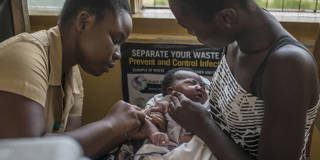Expensive synthetic proteins revolutionized the treatment of cancer and autoimmune disorders in high-income countries. But the same therapeutics could lead to the eradication of infectious diseases linked to poverty if they become more potent, less expensive, and easier to manufacture.
GENEVA – Over the past three years, the COVID-19 pandemic has dominated headlines and spurred scientific research, with experts around the world focusing resources and any potentially useful technology on the problem. While the spotlight on COVID-19 has dimmed slightly, it remains a high global priority, sometimes to the detriment of infectious diseases linked to poverty and primarily affecting the Global South. For example, Malaria killed an estimated 619,000 people – most of them children in Sub-Saharan Africa – in 2021, when there were 247 million cases worldwide.
Malaria is an entirely preventable and treatable disease, and researchers have made great strides on both fronts. In March, for example, the World Health Organization recommended two new dual-ingredient insecticide-treated bed nets to protect against malaria-transmitting Anopheles mosquitoes, one with a more lethal cocktail of insecticides, and the other able to disrupt mosquito growth and reproduction.
Cost-effective antimalarial medicines are another important tool. In 2021, seasonal malaria chemoprevention was administered to around 45 million children aged three months to five years, who received monthly doses of therapeutic drugs at a cost of less than $4 per person. The recent news of a groundbreaking vaccine, GSK’s Mosquirix (also known as RTS,S), offers some hope, although the cost is still relatively high, at around $40 per child for the first year.

GENEVA – Over the past three years, the COVID-19 pandemic has dominated headlines and spurred scientific research, with experts around the world focusing resources and any potentially useful technology on the problem. While the spotlight on COVID-19 has dimmed slightly, it remains a high global priority, sometimes to the detriment of infectious diseases linked to poverty and primarily affecting the Global South. For example, Malaria killed an estimated 619,000 people – most of them children in Sub-Saharan Africa – in 2021, when there were 247 million cases worldwide.
Malaria is an entirely preventable and treatable disease, and researchers have made great strides on both fronts. In March, for example, the World Health Organization recommended two new dual-ingredient insecticide-treated bed nets to protect against malaria-transmitting Anopheles mosquitoes, one with a more lethal cocktail of insecticides, and the other able to disrupt mosquito growth and reproduction.
Cost-effective antimalarial medicines are another important tool. In 2021, seasonal malaria chemoprevention was administered to around 45 million children aged three months to five years, who received monthly doses of therapeutic drugs at a cost of less than $4 per person. The recent news of a groundbreaking vaccine, GSK’s Mosquirix (also known as RTS,S), offers some hope, although the cost is still relatively high, at around $40 per child for the first year.